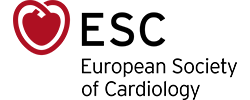EMBARGO : 25 October 2015 at 9:00 CET
The annual congress of the South African Heart Association is being held in Rustenburg from 25 to 28 October 2015. Experts from the European Society of Cardiology (ESC) will present a special programme.1
Professor Brink said: “LQTS is a cardiac disorder associated with blackouts (syncope). It is a treatable cause of sudden death but unfortunately blackouts, being common and most often not serious, are often ignored and the small group with serious events are then missed. When presenting to medical services the underlying cause may also be misdiagnosed.”
Numerous patients with LQTS in South Africa share the same causal KCNQ1 A341V mutation which can all be traced to a common founder couple of Dutch descent in the early 18th century. The current study was set up in the early 1990s to document the founder effect and later expanded to study modifiers of severity together with the group of Peter Schwartz in Italy. Data not previously presented that will be shown at the SA Heart Congress reveals missed opportunities for diagnosis and treatment in apparently well young people who died suddenly.
Through cascade screening of relatives of 26 LQTS index cases, the researchers identified 203 living patients with the KCNQ1 A341V mutation. Nearly four in five (79%) of the mutation carriers had experienced blackouts. Only 26% of the patients had been diagnosed with LQTS initially and given appropriate treatment, while 40% were incorrectly diagnosed with epilepsy and 34% were given incorrect laymen’s or medical explanations such as drowning or sick sinus syndrome.
Some 23 patients died before the age of 20 years. Half “drowned” despite being able swimmers. A 13 year old girl died on a skating rink while being treated for epilepsy and a five year old boy “choked on water”.2
“Our research shows that many patients with LQTS never see a doctor, or when they do, they are given an inaccurate diagnosis,” said Professor Brink. “The most common misdiagnosis in living patients was epilepsy, while in those who died it was drowning.”
“The most feared consequence of LQTS is death during a blackout,” continued Professor Brink.”But a lot of patients do not see a doctor after a first fainting spell (also called syncope or blackout), or even subsequent ones. They faint, lie on the ground for a minute or two, wake up and go on with normal life. They may even see alternative medicine practitioners for these seemingly innocuous events.”
Professor Brink urged the public to seek medical attention if they experience a blackout. “It is astonishing how many patients do not take blackouts, especially if infrequent, seriously,” he said. “And to make matters worse, people frequently do not realise that death during a blackout is a harbinger of similar risk to surviving relatives.”
Once patients or surviving relatives are in front of a doctor there is the issue of correct diagnosis, he added. “An incorrect diagnosis of epilepsy, panic attacks or vasovagal syncope when the problem is an underlying arrhythmia disorder leads to inappropriate management and may be detrimental,” warned Professor Brink.
Professor Karen Sliwa, president of the South African Heart Association, said: “Long QT syndrome is a genetic, but treatable, cause of sudden death. A correct diagnosis is essential to improve treatment of this heart condition and save lives.”
Professor Fausto Pinto, ESC president and course director of the ESC programme in South Africa, said: “Treatment is available for patients with long QT syndrome to reduce the risk of sudden death.3 This may include beta-blockers and an implantable cardioverter defibrillator.”
Professor Brink concluded: “Sudden deaths can be prevented if people recognise unusual fainting events and take action. Fainting at the sight of blood is harmless but a blackout during activity is cause for further investigation. The same goes for drownings or near drownings. If someone suddenly stops swimming during a competition and floats lifeless this is obviously not a typical drowning.”
ENDS

 Our mission: To reduce the burden of cardiovascular disease.
Our mission: To reduce the burden of cardiovascular disease.